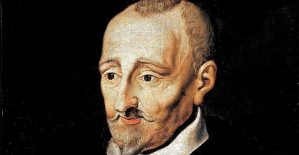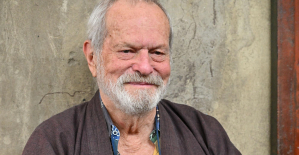Next stop: Bitterfeld! Anyone who travels a lot to and from Berlin with the ICE will be surprised at the intermediate stops in cities such as Bitterfeld or Lutherstadt Wittenberg. What is a nuisance for long-distance travelers in a hurry has a positive effect on both communities. The economy is thriving and families are settling here, since these former "islands" are now connected to the dynamic economic area of the capital.
This is roughly how you have to imagine the effect of the planned European Hydrogen Backbone. The backbone represents the now concrete vision of a European hydrogen network that will one day connect all major industrial centers from Spain to Germany.
By 2030, 6,800 kilometers of lines are to be built or converted. Even 23,000 kilometers by 2040. Between 2030 and 2040, Berlin should also go online.
This hydrogen backbone is an essential step towards Net-Zero if we want to achieve climate neutrality by 2045 - which we committed to in 2021 in the Climate Protection Act. Because we will not be able to electrify all areas of the economy.
By 2030, Germany intends to generate 80 percent of its electricity from renewable energy sources. Regionally generated wind and photovoltaic electricity are important for this, as is green hydrogen. H2 is not just an additional energy carrier, but the missing link of the renewables - i.e. a missing link.
Green hydrogen can be generated from wind or PV power using electrolysis. In this way, green electrons become green molecules. Due to its versatility and storage capacity, hydrogen is as versatile as a Swiss army knife and there are hardly any limits to its application.
If we think today about how we will heat our houses, charge cars and operate industrial plants in the future, then wind and PV will play a major role. But it is also true that this is not enough to cover our electricity and heat requirements, which tend to increase with heat pumps and e-cars.
We will continue to use local power plants in the future, which we then operate with hydrogen - either from domestic production or, in the future, primarily imported. However, I am not talking about a gas-fired power plant that burns hydrogen, but rather about an XXL fuel cell.
Such a fuel cell power plant with an output of 78 megawatts is already in operation in Shin Incheon, South Korea. It supplies 250,000 households with electricity and heats 44,000 households. Since the fuel cell needs dust-free outside air to be able to work, the installed air filter reduces 24,000 tons of fine dust annually.
The power plant is operated solely with hydrogen, which is produced in a nearby industrial park. Further plants are planned, because South Korea relies on hydrogen and invests accordingly.
Some German power plant builders are also developing comparable systems. From my point of view, it is crucial that such plants are not only planned by German engineers, but also built in Germany if Germany wants to be at the forefront of building the hydrogen economy. Because it has always been the case that German industrial products sell better when there are reference projects in Germany.
With the Incheon, the Doosan company from South Korea already has a reference and thus a market advantage. The highly innovative and ultimately successful mobility project Transrapid was not granted a worldwide roll-out under the German flag because there was no such reference project in Germany. This was due to the high costs, but also to a lack of industrial and political courage.
As far as courage, or rather daring, is concerned, we in Germany have already been further. When the consortium of AEG and Siemens-Halske applied to build the Berlin subway, the two companies built a tram connection under the Spree for demonstration purposes, the so-called Knüppelbahn, which connected the Stralau peninsula with Treptow.
With this feat of engineering, they have shown that they can do it and that public mass mobility is not a pipe dream. And with this reference, the basis for public acceptance was created at the same time.
This broad acceptance is essential if we want to build pipelines, wind turbines or even fuel cell power plants in residential areas in the future. But even the aforementioned fuel cell power plant - no matter how good it may be for the environment - nobody wants to have in their backyard for the time being.
So we don't just need innovative technologies - we also need innovative concepts that are popular with the general public and especially with local residents because they offer benefits that go beyond climate protection. Otherwise it is to be expected that citizens' initiatives will slow down the process. That takes time that we no longer have. How do you get out?
In the past, infrastructure projects were all too often zero-sum games: some gain something, others lose. Two projects by the Danish architects BIG show that there is another way and that the general public and local residents can benefit.
On the one hand, CopenHill is a waste-to-energy plant in Copenhagen, which provides up to 63 megawatts of electricity and 250 megawatts of heat from local waste. However, CopenHill is also an all-year ski slope, a climbing facility with restaurants, an 80-meter-high viewing platform and has become one of the most popular tourist destinations in the city.
The New York Dryline is not a power plant, but was also designed by BIG: the 16-kilometer flood wall is intended to protect southern Manhattan from hurricane flooding. The Dryline fits organically into the existing neighborhood, creates new spaces and high-quality social infrastructure and can hope for public acceptance.
So if we think about fuel cell power plants in densely populated urban areas, they can be multifunctional due to the lack of a combustion process and can also serve as urban parks, for example. For the residents, a directly visible benefit and added value from green electricity, heat, fine dust filters and relaxation.
With projects of this magnitude, the additional effort required to create an urban highlight from a bulky power station block usually accounts for only two to five percent of the total budget - as long as you plan the design from the outset.
Said hydrogen power plants work most economically when they are closely integrated into a hydrogen ecosystem of H2 production and use. Like in Bitterfeld, for example. In the local chemical park, hydrogen is produced during the production of chlorine. Hydrogen can be used by urban public transport in hydrogen buses or by means of a fuel cell power plant to supply Bitterfeld households with electricity and heat.
The current decade is the decade of infrastructure. Now we are laying the foundation for the post-fossil era. Germany can actively shape this development politically and technologically.
To do this, we must draw the right lessons from the wrong decisions of the past. Now is the time to show that we have not forgotten technological daring and can reconcile energy infrastructure with social and environmental sustainability.
So, I have to get off in Bitterfeld.
Prof. Dr. Jürgen Peterseim is Senior Manager at PwC Germany
"Everything on shares" is the daily stock exchange shot from the WELT business editorial team. Every morning from 5 a.m. with the financial journalists from WELT. For stock market experts and beginners. Subscribe to the podcast on Spotify, Apple Podcast, Amazon Music and Deezer. Or directly via RSS feed.

 United States: divided on the question of presidential immunity, the Supreme Court offers respite to Trump
United States: divided on the question of presidential immunity, the Supreme Court offers respite to Trump Maurizio Molinari: “the Scurati affair, a European injury”
Maurizio Molinari: “the Scurati affair, a European injury” Hamas-Israel war: US begins construction of pier in Gaza
Hamas-Israel war: US begins construction of pier in Gaza Israel prepares to attack Rafah
Israel prepares to attack Rafah Spain is the country in the European Union with the most overqualified workers for their jobs
Spain is the country in the European Union with the most overqualified workers for their jobs Parvovirus alert, the “fifth disease” of children which has already caused the death of five babies in 2024
Parvovirus alert, the “fifth disease” of children which has already caused the death of five babies in 2024 Colorectal cancer: what to watch out for in those under 50
Colorectal cancer: what to watch out for in those under 50 H5N1 virus: traces detected in pasteurized milk in the United States
H5N1 virus: traces detected in pasteurized milk in the United States Falling wings of the Moulin Rouge: who will pay for the repairs?
Falling wings of the Moulin Rouge: who will pay for the repairs? “You don’t sell a company like that”: Roland Lescure “annoyed” by the prospect of a sale of Biogaran
“You don’t sell a company like that”: Roland Lescure “annoyed” by the prospect of a sale of Biogaran Insults, threats of suicide, violence... Attacks by France Travail agents will continue to soar in 2023
Insults, threats of suicide, violence... Attacks by France Travail agents will continue to soar in 2023 TotalEnergies boss plans primary listing in New York
TotalEnergies boss plans primary listing in New York La Pléiade arrives... in Pléiade
La Pléiade arrives... in Pléiade In Japan, an animation studio bets on its creators suffering from autism spectrum disorders
In Japan, an animation studio bets on its creators suffering from autism spectrum disorders Terry Gilliam, hero of the Annecy Festival, with Vice-Versa 2 and Garfield
Terry Gilliam, hero of the Annecy Festival, with Vice-Versa 2 and Garfield François Hollande, Stéphane Bern and Amélie Nothomb, heroes of one evening on the beach of the Cannes Film Festival
François Hollande, Stéphane Bern and Amélie Nothomb, heroes of one evening on the beach of the Cannes Film Festival Skoda Kodiaq 2024: a 'beast' plug-in hybrid SUV
Skoda Kodiaq 2024: a 'beast' plug-in hybrid SUV Tesla launches a new Model Y with 600 km of autonomy at a "more accessible price"
Tesla launches a new Model Y with 600 km of autonomy at a "more accessible price" The 10 best-selling cars in March 2024 in Spain: sales fall due to Easter
The 10 best-selling cars in March 2024 in Spain: sales fall due to Easter A private jet company buys more than 100 flying cars
A private jet company buys more than 100 flying cars This is how housing prices have changed in Spain in the last decade
This is how housing prices have changed in Spain in the last decade The home mortgage firm drops 10% in January and interest soars to 3.46%
The home mortgage firm drops 10% in January and interest soars to 3.46% The jewel of the Rocío de Nagüeles urbanization: a dream villa in Marbella
The jewel of the Rocío de Nagüeles urbanization: a dream villa in Marbella Rental prices grow by 7.3% in February: where does it go up and where does it go down?
Rental prices grow by 7.3% in February: where does it go up and where does it go down? Even on a mission for NATO, the Charles-de-Gaulle remains under French control, Lecornu responds to Mélenchon
Even on a mission for NATO, the Charles-de-Gaulle remains under French control, Lecornu responds to Mélenchon “Deadly Europe”, “economic decline”, immigration… What to remember from Emmanuel Macron’s speech at the Sorbonne
“Deadly Europe”, “economic decline”, immigration… What to remember from Emmanuel Macron’s speech at the Sorbonne Sale of Biogaran: The Republicans write to Emmanuel Macron
Sale of Biogaran: The Republicans write to Emmanuel Macron Europeans: “All those who claim that we don’t need Europe are liars”, criticizes Bayrou
Europeans: “All those who claim that we don’t need Europe are liars”, criticizes Bayrou These French cities that will boycott the World Cup in Qatar
These French cities that will boycott the World Cup in Qatar Medicine, family of athletes, New Zealand…, discovering Manae Feleu, the captain of the Bleues
Medicine, family of athletes, New Zealand…, discovering Manae Feleu, the captain of the Bleues Football: OM wants to extend Leonardo Balerdi
Football: OM wants to extend Leonardo Balerdi Six Nations F: France-England shatters the attendance record for women’s rugby in France
Six Nations F: France-England shatters the attendance record for women’s rugby in France Judo: eliminated in the 2nd round of the European Championships, Alpha Djalo in full doubt
Judo: eliminated in the 2nd round of the European Championships, Alpha Djalo in full doubt


















